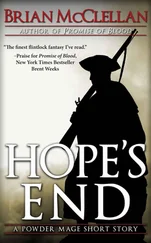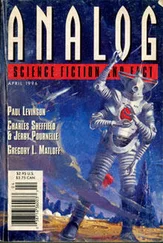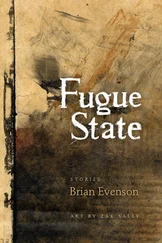Thankfully, however, it had not literally come to that.
She had bought the Sunday edition of the Fort Collins Coloradoan from a vending machine before they had left town, and found nothing on the assault in the record store. She picked up the next day’s edition in Denver and learned that, whatever his transgressions, Clay was no killer. The CSU junior he’d attacked had been hospitalized with a skull fracture and lacerations; not good, but a long way from a murder victim. The police had only the vaguest description of his assailant, and she reasoned that, if they investigated much at all, they would concentrate locally. What reason would they have of suspecting the assailant to be a drifter? How many drifters, in the winter, went shopping for cassettes?
Clay conformed to no pattern.
He’ll get away with this, she thought. He’ll get away with this because I let him.
Adrienne got him, under some protest, to resume taking lithium; got him another bottle to replace those he had flushed. She got him to agree to three sessions in six days — a crisis schedule, but surely this qualified.
She did not shy away from his attack on the student. In the eyes of the world they might pretend it never happened, but not with each other. She had him dissect it, analyze his feelings at each stage; they took it apart until they could scrutinize the incident frame by frame, like a shaky film of an assassination.
She hammered away to reinforce the notion that he had a conscience, and since it was operable after the fact he should be able to employ it beforehand. It would require that he make an effort to pause before acting on impulse, and imagine having completed whatever he might be tempted to do. Carry it to its ends: Who would be hurt, who would suffer? He should close his eyes, if need be, and feel his way through the pain that lay in wait for everyone; better to summon forth imaginary guilt than render the real thing necessary.
Neither did she ignore Clay’s new hypothesis that he and the others were social malignancies. Although the more she gave it thought, the more it seemed that Clay had intuitively hit upon something that made a bit of sense on a literal level, as well as metaphorically. Biochemically, some people simply were programmed for violence, and the surroundings in which they grew up could have a tremendous influence.
She knew that aggression had a chemical basis. In the brain’s vast web of circuitry, behavioral messages were relayed by chemicals known as neurotransmitters, two of which — serotonin and norepinephrine — regulated aggression. In studies, men whose spinal fluid was found to have high levels of serotonin, which carried inhibitory messages, routinely scored low on aggression; those higher in norepinephrine were correspondingly more aggressive. That was why Clay had been prescribed lithium in the first place; it worked by boosting serotonin levels. She was not convinced it was wholly effective on him — it did not work on psychotics and calculating predators — but it could not hurt.
Yet it was those environmental factors that really intrigued her. It had been proven that a child’s early surroundings could even influence his biochemistry. Young boys from homes in which they faced situations that provoked aggressive responses were often found to have begun adapting to that environment: Their systems had begun to produce less serotonin, more norepinephrine.
They were gearing up to survive.
So why not take a wild leap and superimpose that process upon a much larger picture? Suppose the bodies — the very genetic encoding — of human beings were responding to the colossal pressures exerted by a world whose rate of change was increasing exponentially.
Was it so mad a thought? It had taken a billion years for the brains of the first vertebrates to evolve into the intelligence of primates. In a mere two million, self-aware humanity had developed and assumed dominion. From common ancestors, the Australopithecus and Homo genera diverged, the former dying out, a failed lineage, while the latter thrived. Homo habilis learned to use tools, and was replaced by Homo erectus , who mastered fire and hunting, who was in turn replaced by Homo sapiens , who mastered all else after emerging perhaps 40,000 years ago. Within the past 6000, modern civilization had arisen; the past 4500, enduring architecture. The past three hundred, the industrial age. The past fifty, nuclear fusion. The past thirty, the ability to set foot on another celestial body. And since then had come the manufacture of artificial hearts and fiber-optic filaments, and the development of laser microsurgery.
All this, while the DNA of Homo sapiens was still ninety-nine percent identical to that of the chimpanzee.
With such a wrenching burst of development, might not a genetic whiplash like Helverson’s syndrome at least be feasible?
Adrienne had heard it said that Homo sapiens had ceased to evolve because there was no more need. The end goal served by evolution is success in breeding, and certainly that success was indisputable. Homo sapiens had become not only the most successfully prolific species on earth; it had become the sole species possessing the ability to destroy itself.
Perhaps those who claimed that modern humanity didn’t need to evolve any further were just being smug about their top rung on the ladder. Maybe they’d not considered that more fine-tuning would become necessary to psychologically adapt to the world that had emerged out of their unchallenged dominion.
Grand schemes; even bolder conjecture. But she had heard no explanation for Helverson’s syndrome that made any more sense, so she would at least entertain it.
Grand schemes. Bold conjecture. And an indifferent nature that encouraged diversity and variation, so that to the victor would belong the spoils.
Still, in the end, it came down to individuals, who struggled to be born, struggled to live with the differences that made them mutants among their own kind, and who struggled against the death that waited for them all. Who struggled mightily, even nobly, regardless of who had made them, and how…
And why.
* * *
At the end of the week, Sarah came home late in the afternoon with a ring in her navel. Giddy and hyper, she could have climbed walls, could have dazzled distant stars with the gleam in her eyes.
She finally stood still long enough to pose with legs braced wide, leaning back with her hips and belly thrust forward as she tugged up her black T-shirt, the ominous Club Cannibal shirt she used to sleep in. “Don’t you love it?”
Adrienne stared.
Sarah’s navel was centered like a pearl in the firm lush swell of her belly, and the ring was skewered through its thick top lip, a simple uroboros of silver. The surrounding skin was red and inflamed, but not as much as Adrienne might have expected. A few thin streaks of dried blood were left on her skin.
“I had it done at this piercing gallery Nina goes to for her ears, and it was so great, they’re really serious about what they do there, and look at it as a ritual, and they play whatever music you’d like while it’s being done, and they talk to you and hold your hand, and whoever’s hanging out at the time can watch if you don’t mind.”
Adrienne blinked. “Did you?”
“Did I mind?” Sarah was incredulous, then broke into a broad smile. “Of course not, I sort of liked that I wasn’t going through it alone. When people are watching it’s like this encouragement to endure the pain better, it’s this support system even though they’re mostly strangers you’ll never see again.” She had scarcely paused for breath since walking in. Sarah let the shirt fall loosely back into place while twining up against her, running her hands along Adrienne’s sides and breathing heavily through parted lips. “But I can’t tell you how much I wanted your tongue on me when it was happening, I could have come all the way to the ceiling.”
Читать дальше












